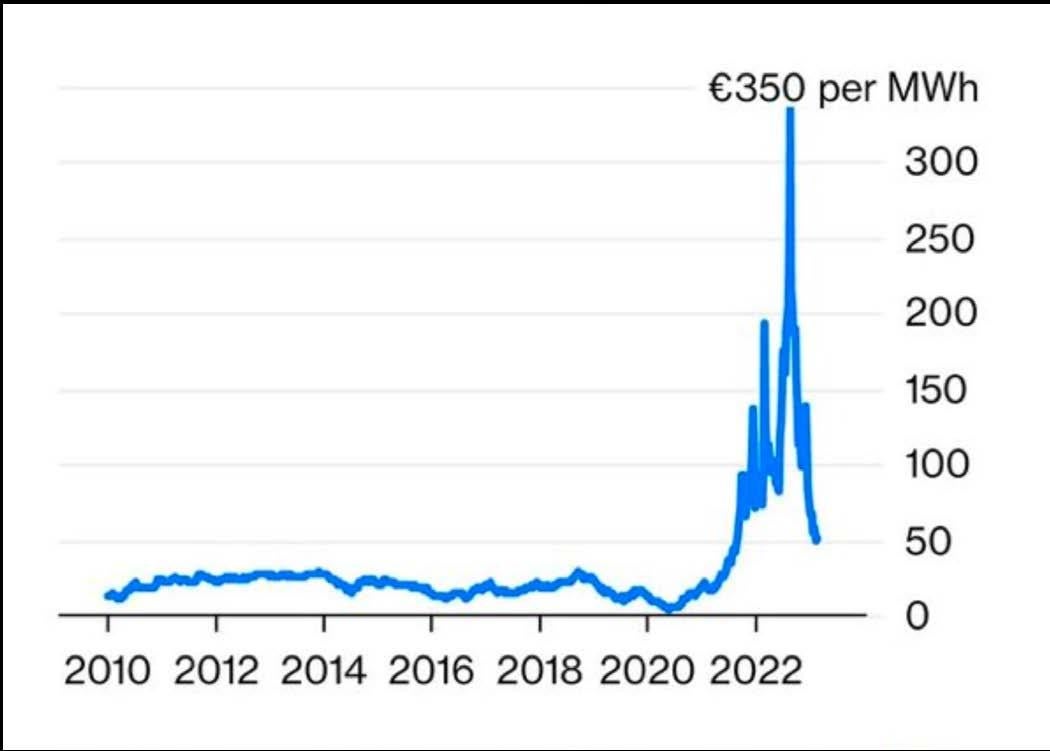
3 minute read
Conclusions
US leaders went over the heads of local communities, who would have to be sacrificed, their lands and waters ravaged by these gas terminals which would spew their toxic emissions into their skies. European decision-makers rolled out the red carpet for LNG from harmful fracking which they had banned in their own countries.
2022 will be remembered as one of the most consequential energy crises the world has ever seen. This crisis could have been a unique opportunity: decision-makers could have gathered experts from all fronts - scientists, think tanks, NGOs - to make a thorough assessment of the risks we would face, implement immediate temporary mitigation measures, develop solid plans with climate targets in sight, and make the long-awaited shift to energy efficiency and renewable energy. Instead, the people we elected to represent our common good, and lead the shift to a sustainable future, appointed representatives of the gas industry to show us the way out of the energy crisis. This gave gas operators a golden opportunity to push for the continuation - and even expansion - of their business model. Gas was the problem. Gas would be the solution.
This cognitive dissonance was transformed into a logical rhetoric with the relentless use of shock therapy: the gas industry kept hammering on the fear and confusion caused by the war in Ukraine, in order to obscure its own toxicity and present itself as the answer to all concerns. In this gaslighting strategy, the gas industry also used the technique of divide and conquer: there would now be “bad Russian gas” from which to run away, and to be replaced by “good freedom gas” coming from the United States of America. The instability Russian gas precipitated us into would be remedied by American gas which would guarantee us security. In other words, our dependence on Russian gas would be solved by a decades-long commitment towards American gas. In parallel to US gas, companies like Fluxys successfully pushed for Azerbaijani gas to be part of the freedom package, with the European Union injecting public money into the expansion of the Trans Adriatic Pipeline (in which Fluxys conveniently holds 20% of the shares).531 Those “geopolitical investments”
(dixit Charles Michel, the president of the European Council) were going to radically redesign the fossil fuel market and change our energy future.
European companies have signed a record number of long-term contracts with US companies, betting on LNG export terminals not yet built and just at proposal stage, pushing for the final investment decisions these terminals need in order to get started. This is mirrored on the other side of the Atlantic, by a mushrooming of proposals from gas operators for import terminals to be built or expanded, from Greece over France to Germany. These projects have been supported by European banks, investing in fossil fuel lock-ins. These hasty developments have been lauded in the US by decision-makers telling their citizens they are rescuing their European allies, and by European leaders applauding Europe’s recovered independence.
The architects of this ‘salvation plan’, however, completely omitted the reality, which shows none of this Atlantic ratchet was needed. They turned a blind eye to the utilisation rates of existing European LNG terminals which, even at the peak of imports - when it was being reported they were running at full speedwere far from being saturated. They completely glossed over the mismatch between immediate needs and long-term contracts and terminals unable to answer these needs because they would take years to make operational. They lost climate targets from sight, and forgot about the logical evolution of demand, which would condemn those terminals in advance and turn them into stranded assets to be paid for by citizens. They gobbled up the future hydrogen conversion plans the industry waved at them to get their fossil infrastructure signed off, without looking into the technical challenges.
US leaders went over the heads of local communities, who would have to be sacrificed, their lands and waters ravaged by these gas terminals which would spew their toxic emissions into their skies. European decision-makers rolled out the red carpet for LNG from harmful fracking which they had banned in their own countries.
This lock-in plan will come at a high price for US and EU citizens who, already facing an unparalleled social crisis, will have to pay for the decommissioning of these unneeded projects on which their money has been and will be spent. In addition, these investments come at the expense of real solutions which would benefit citizens - and the climate - immediately (like the insulation of their homes), while also being a guaranteed investment in a sustainable future.
Or to conclude with the words of John Beard, community advocate in the Port Arthur area: “Europeans shouldn’t think gas exported from my community is ‘freedom gas’. Nothing’s really free. If it means freedom because you’re independent of a former source, the Soviet Union, then you’re just trading one form of slavery for another. Because now, even though you have a good relationship with America, you’re still being enslaved by this gas that causes so many problems and troubles. All of this trouble was behind gas. It’s not freedom gas because you’re really not free. It’s going to cost you. It’s going to cost you more and it’s going to cost you in the long run. Because the more you use it, the more peril it places on your life and health, and the life and health of people across this entire planet. Climate change is real. We see it here every day ”










